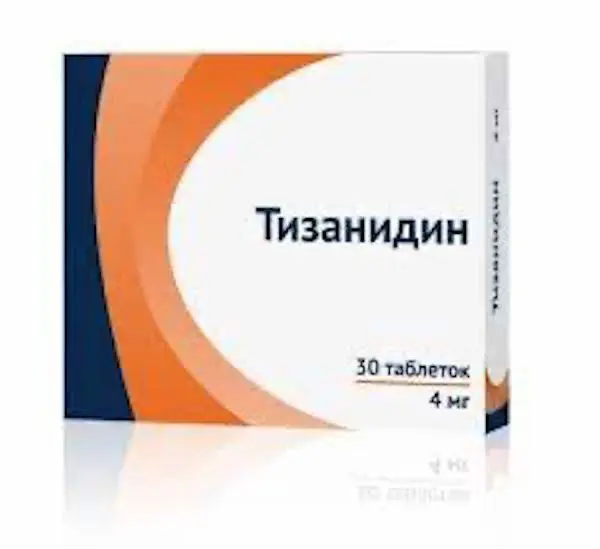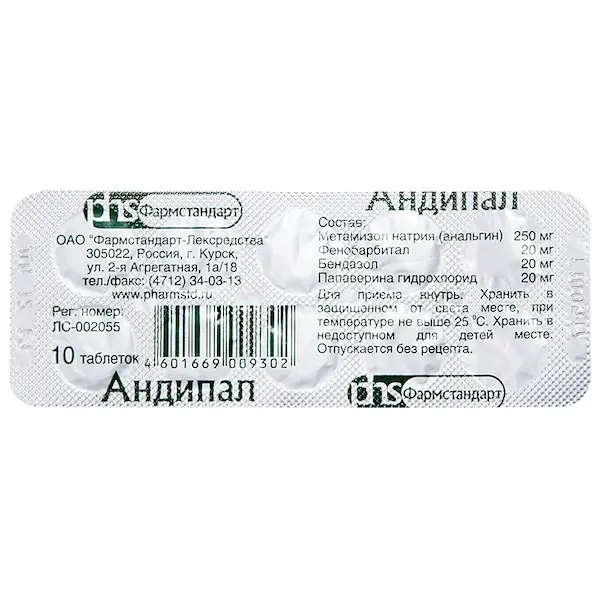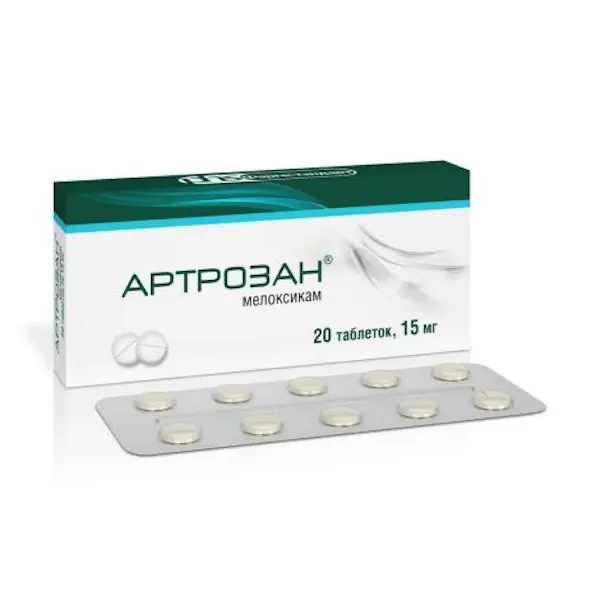Description
Tizanidine Pharmacodynamics
Tizanidine is a centrally acting myorelaxant. It stimulates presynaptic alpha-adrenoceptors of the spinal cord, suppressing release of mediator amino acids, which stimulate receptors to N-methyl-O-aspartate (NMDA-receptors), which leads to suppression of polysynaptic excitation transmission in the intermediate neurons of the spinal cord, which regulates the tone of the skeletal muscles. Since it is this mechanism that is responsible for excessive muscle tone, when it is suppressed, muscle tone decreases. In addition to its myorelaxant properties, tizanidine also has a central moderately pronounced analgesic effect.
Tizanidine is effective both for acute painful muscle spasm and for spasticity of spinal and central genesis. It reduces spasticity and clonic convulsions and spasms, due to which resistance to passive movements decreases and the volume of active movements increases. The myorelaxant effect (as measured by the Ashworth scale and by the “pendulum” test) and side effects (decrease in heart rate and blood pressure) of the drug depend on the plasma concentration of tizanidine.
Indications
Painful muscle spasm:
– Associated with static and functional spinal disorders (cervical and lumbar syndrome)
-After surgical interventions, e.g., for herniated discs or osteoarthritis of the hip
Spasticity of skeletal muscles in neurological diseases – in multiple sclerosis, chronic myelopathy, degenerative diseases of the spinal cord, the consequences of cerebral palsy (in patients over 18 years).
Contraindications
Hypersensitivity to tizanidine or to any other component of the drug;
– severe hepatic function impairment;
– concomitant use with potent CYP1A2 isoenzyme inhibitors (fluvoxamine and ciprofloxacin);
– pregnancy;
– Breast-feeding period;
– children under 18 years of age (efficacy and safety have not been established).
– It is not recommended to use the drug in patients with rare hereditary galactose intolerance, lactase deficiency, glucose-galactose malabsorption, because the drug contains lactose.
Caution: Caution is recommended when using tizanidine in patients with moderately expressed liver dysfunction, congenital Q-T interval prolongation syndrome, as well as in concurrent use with Q-T interval prolonging agents and in patients aged over 65 years. It is necessary to monitor regularly the laboratory parameters of the functional state of the heart and monitor ECG values.
Dosage and administration
- Tizanidine has a narrow therapeutic index and high variability of tizanidine plasma concentrations, therefore a careful dosage selection is required. The initial dose of 2 mg 3 times a day can minimize the risk of adverse reactions. The drug is prescribed orally. The dose should be carefully chosen taking into account the individual needs of the patient.
- In painful muscle spasm, a dose of 2 mg or 4 mg 3 times a day is prescribed. In severe cases, an additional 2 mg or 4 mg may be taken before bedtime (preferably before bedtime because of the possible increase in drowsiness).
- In case of skeletal muscle spasticity due to neurological diseases, the dose should be adjusted individually.
- The initial daily dose should not exceed 6 mg divided into three doses – 2 mg 3 times a day. The dose can be increased gradually, by 2-4 mg, at intervals of 3-4 to 7 days. The optimal therapeutic effect is usually achieved with a daily dose of 12 to 24 mg divided into 3 or 4 doses at regular intervals. The dose of 36 mg per day should not be exceeded.
- Administration in patients over 65 years of age
- Experience in using the drug in patients aged 65 years and older is limited.
- It is recommended to begin therapy with minimum dose with gradual increase until optimal balance of tolerability and efficacy is achieved. In patients with renal insufficiency (in creatinine clearance less than 25 ml/min), the recommended starting dose is 2 mg once daily. Increase the dose gradually, slowly, taking into account tolerability and efficacy. If more pronounced effect is necessary, it is recommended to increase the dose prescribed once daily at first, then the frequency of prescribing is increased.
- Administration in patients with impaired renal function
- It is recommended to start treatment of patients with renal insufficiency (CKD less than 25 ml/min) with a dose of 2 mg once a day. The dose is increased in small “steps” with regard to tolerability and efficacy. If there is a need to achieve a more pronounced effect, it is recommended to increase first the dose administered once a day, then the frequency of use.
- Administration in patients with liver dysfunction
- Administration in patients with severe liver dysfunction is contraindicated. The drug usage in patients with moderate liver dysfunction should be used with caution; it is recommended to start with low doses with gradual increase till optimal ratio of tolerability to therapy efficiency is reached (see “Special indications”).
- Interruption of treatment
- If therapy with the drug is discontinued, in order to reduce the risk of ricochet increase of blood pressure and tachycardia, the dose should be slowly reduced until complete withdrawal of the drug, especially in patients receiving high doses of the drug for a long time.





